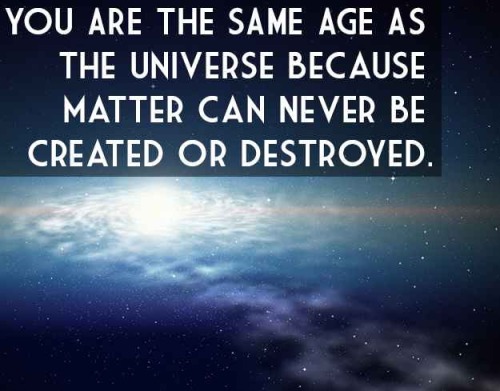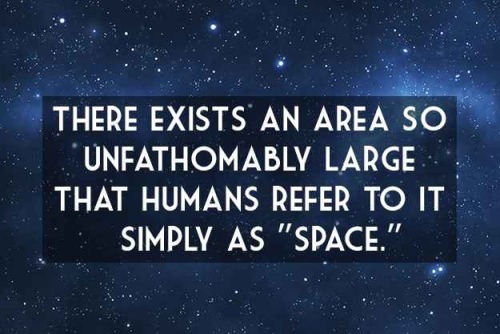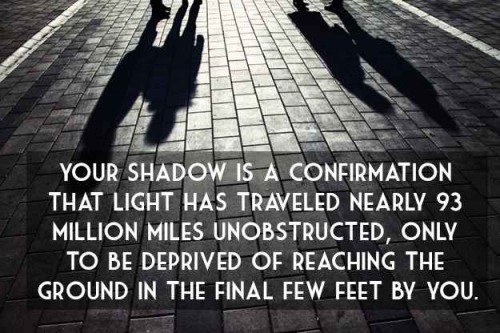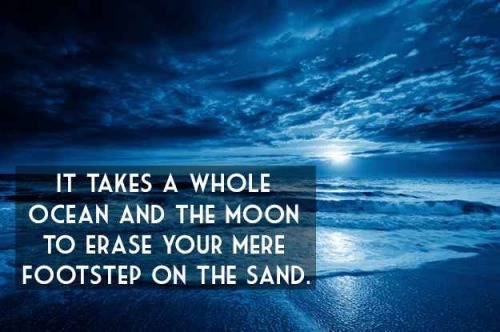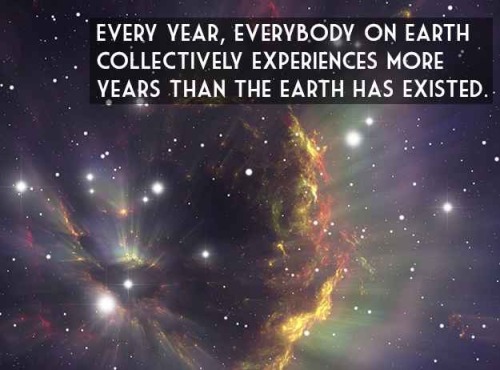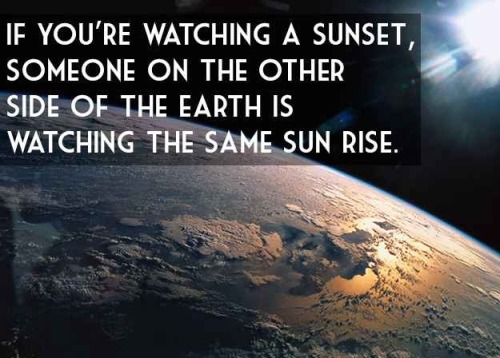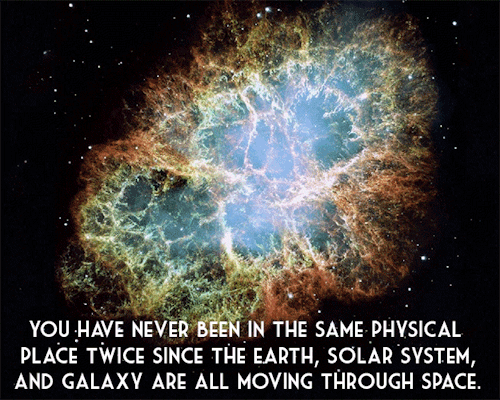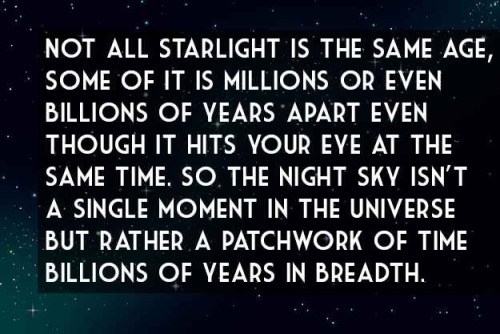“So You’re Made Of Detritus [from Exploded Stars]. Get Over It. Or Better Yet, Celebrate It. After
![“So You’re Made Of Detritus [from Exploded Stars]. Get Over It. Or Better Yet, Celebrate It. After](https://64.media.tumblr.com/7b85972ed8f15785b7e43e3943d0b4e3/tumblr_n8fh91uPC51r6lxzlo5_500.png)
![“So You’re Made Of Detritus [from Exploded Stars]. Get Over It. Or Better Yet, Celebrate It. After](https://64.media.tumblr.com/157f541c3685a1ab4b5254d019f90656/tumblr_n8fh91uPC51r6lxzlo4_500.jpg)
![“So You’re Made Of Detritus [from Exploded Stars]. Get Over It. Or Better Yet, Celebrate It. After](https://64.media.tumblr.com/fdfc224a8c254c3e260d50993cd6ce6c/tumblr_n8fh91uPC51r6lxzlo3_500.jpg)
![“So You’re Made Of Detritus [from Exploded Stars]. Get Over It. Or Better Yet, Celebrate It. After](https://64.media.tumblr.com/0b11234555bb5bee31d73a0c1dde7aa6/tumblr_n8fh91uPC51r6lxzlo9_500.jpg)
![“So You’re Made Of Detritus [from Exploded Stars]. Get Over It. Or Better Yet, Celebrate It. After](https://64.media.tumblr.com/7d1793d6dc183a14a78cd89ff8a52b8c/tumblr_n8fh91uPC51r6lxzlo1_500.jpg)
![“So You’re Made Of Detritus [from Exploded Stars]. Get Over It. Or Better Yet, Celebrate It. After](https://64.media.tumblr.com/b58053b1d24d0a0e1b91b03e1931b225/tumblr_n8fh91uPC51r6lxzlo10_500.jpg)
![“So You’re Made Of Detritus [from Exploded Stars]. Get Over It. Or Better Yet, Celebrate It. After](https://64.media.tumblr.com/448061117fdc602cced295611086daaf/tumblr_n8fh91uPC51r6lxzlo6_500.jpg)
![“So You’re Made Of Detritus [from Exploded Stars]. Get Over It. Or Better Yet, Celebrate It. After](https://64.media.tumblr.com/3ea4803b2d11ebe39d9bbf9f7df80a0a/tumblr_n8fh91uPC51r6lxzlo2_500.jpg)
“So you’re made of detritus [from exploded stars]. Get over it. Or better yet, celebrate it. After all, what nobler thought can one cherish than that the universe lives within us all?”
―Neil deGrasse Tyson
These photos are on the shortlist for the Astronomy Photographer of the Year 2014, a competition and exhibition run by the Royal Observatory Greenwich. The winning images will be posted here on September 18.
More Posts from Outofambit and Others


Kepler Mission Analysis Shows Reduced Number of Earth-Sized Planets in Field of View
A large number of worlds found by NASA’s Kepler alien planet-hunting space telescope are probably significantly larger than scientists previously estimated, a new study suggests. Using a galaxy similar to our own Milky Way, the image above shows the scale of the distances for the sample of stars with planet candidates described in a new study by scientists using the Kitt Peak National Observatory Mayall 4-meter telescope . The circled dot represents the position of the sun in the Milky Way, and the stippled cone shows how far away the new candidate stars are (2800-7000 light years), compared to the size of our galaxy.
The Kepler Space Telescope has spotted more than 2,700 potential exoplanets since its launch in 2009, and scientists using the Kitt Peak National Observatory categorized the home stars of many of those planet candidates for the past three years. In particular, the researchers made detailed follow-up observations of 300 of the stars Kepler found likely to be harboring exoplanets.
The Kepler satellite, in orbit around the sun, stares at a region of the northern hemisphere sky sandwiched between the bright stars Vega and Deneb. Attached to the telescope is the largest imaging camera ever flown into space—16 million pixels—the only instrument on the telescope and the one used to monitor all the stars in its search for planets. Planets are detected if they pass in front of their parent sun, causing a very slight dip in the star’s brightness. When this dip repeats periodically, it reveals the presence of a possible planet, the length of the planet’s “year”, and other information.
One of the main findings of this initial work is that our observations indicate that most of the stars we observed are slightly larger than previously thought and one quarter of them are at least 35 percent larger,” astronomer and leader of the study Mark Everett said in a statement. “Therefore, any planets orbiting these stars must be larger and hotter as well. By implication, these new results reduce the number of candidate Earth-size planet analogues detected by Kepler.”
Read

This Is Big: Scientists Just Found Earth’s First-Cousin
Right now, 500 light years away from Earth, there’s a planet that looks a lot like our own. It is bathed in dim orangeish light, which at high noon is only as bright as the golden hour before sunset back home.
NASA scientists are calling the planet Kepler-186f, and it’s unlike anything they’ve found. The big news: Kepler-186f is the closest relative to the Earth that researchers have discovered.
It’s the first Earth-sized planet in the habitable zone of another star—the sweet spot between too-hot Mercury-like planets and too-cold Neptunes— and it is likely to give scientists their first real opportunity to seek life elsewhere in the universe. “It’s no longer in the realm of science fiction,” said Elisa Quintana, a researcher at the SETI Institute.
But if there is indeed life on Kepler-186f, it may not look like what we have here. Given the redder wavelengths of light on the planet, vegetation there would sprout in hues of yellow and orange instead of green.
Read more. [Image: NASA Ames/SETI Institute/JPL-Caltech]
I have this weird theory that some people are drawn to each other because their atoms were near each other when the universe was created and over time the same atoms keep coming back together
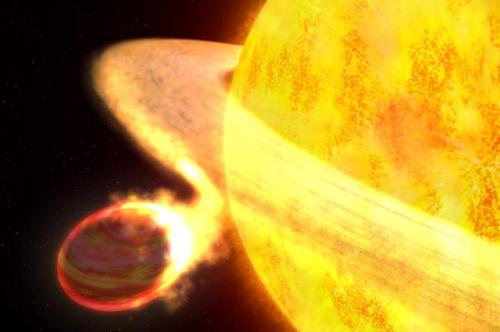
Most Amazing Exoplanets
The term ‘exoplanet’ applies to any planet outside of our solar system. At last count, we have identified 3,538.
Out of the thousands of planets we know about, some of them are incredibly bizarre compared to what we are used to seeing in our own solar system. Here are some exoplanets with very unique characteristics:
Kepler-78b
The most astounding fact about Kepler-78b is that it shouldn’t even exist, according to our current knowledge of planetary formation. It is extremely close to its star at only 550,000 miles (900,000 kilometers). As a comparison, Mercury only gets within 28.5 million miles (45.9 million kilometers) of the sun in the nearest point of orbit. With that proximity, it isn’t clear how the planet could have formed as the star was much larger when the planet formed. With its current distance, that would mean it formed inside the star, which is impossible as far as we know.
The planet itself is only slightly larger than Earth, though surface conditions are markedly different. The temperature on the surface is estimated to be 4300° F (2400° C), which is nearly nine times as hot as the temperature on Venus. Unfortunately for Kepler-78b, it is likely that the star’s gravitational pull will gradually bring the star closer and totally consume it in the next 3 billion years.
WASP-12b
While Kepler-78b still has about 3 billion more years before getting consumed by its star, the process is well underway for WASP-12b. This exoplanet is actively getting pulled apart by its parent star, much to the delight of astronomers who can watch the process unfold. So much material has been pulled away from the planet, it has been pulled into an oblong football shape. Astronomers have estimated that WASP-12b has about 10 million more years until it is completely pulled apart by the star.
The planet is described as a “hot Jupiter” as it is a gas planet that is about 40 percent larger than Jupiter. It is currently so close to its star that it only takes 1.1 Earth days for the planet to complete a full orbit. The star, WASP-12, is G-type main sequence star, just like our own sun. It is located about 800 lightyears away in the Auriga constellation.
TrES-2b
TrES-2b has been dubbed the “dark planet” because it does not reflect light. If we were able to view it directly, it would likely just look like a coal-black ball of gas. At 1800°F (1000°C) the planet is way too hot for clouds, which would help reflect the star’s light. The red tinges are areas of superheated gas. Other darker planets only reflect about 10% of the star’s light, but TrES-2b only reflects about 1%, making it the darkest planet ever discovered.
Why is TrES-2b so dark? Scientists aren’t quite sure. Right now, the best guess is that the majority of the planet’s composition is something like sodium or potassium which absorbs light. This dark world is located about 750 lightyears away in the Draco constellation.
HD 189773b
HD 189773b is pretty exciting. It is relatively close, at only 63 lightyears away. It is also the first planet to have its color determined and it turned out to be a pretty blue planet, just like Earth. Unlike Earth, however, HD 189773b is a gas giant with a temperature that reaches a sweltering 1800°F (1000°C). The weather gets more extreme, because intense pressure and temperature turns silicate particles in the atmosphere into glass, which then rains down. As if that doesn’t sound dangerous enough, the winds have been estimated to gust at 4,000 mph (7,000 km/h) which really whips those glass particles around.
55 Cancri e
55 Cancri e is twice the size of Earth but is nearly 8 times more massive and twice as dense. Last fall, researchers deduced that the mass of the planet was largely carbon. Due to the pressure and surface temperature of 4892°F (2700°C) it very well could have formed diamond. It is so close to its parent star it takes a mere 18 hours for the planet to complete a full orbit.
55 Cancri e is only about 40 light-years away from us in the Cancer constellation. The parent star is much more carbon than our own sun, so it might be too surprising that planet e is also carbon-rich. From there, it isn’t much of a stretch to assume that the other four known planets in the system would also have a high carbon content.
Because of these extreme conditions, astronomers don’t believe that 55 Cancri e has an atmosphere, making it a poor candidate for the possibility for life. However, it is close enough for astronomers to use it to test hypotheses about planetary formation.
PSR B1620-26b
Nicknamed “Methuselah,” PSR B1620-26b is the oldest known exoplanet. The planetary system formed approximately 12.7 billion years ago, when the Milky Way galaxy was in its infancy. It is located in the Scorpius constellation about 12,400 lightyears away.
Methuselah orbits binary stars and goes around them in a circumbinary orbit. As if Methuselah’s age isn’t interesting enough, the fact that it orbits two mismatched dead stars is quite unusual. One of the stars is a pulsar and the other is a white dwarf. Since Methuselah is found in a dense star cluster, astronomers initially thought it could be a star as well, and would be considered a brown dwarf. Measurements from the Hubble would confirm that Methuselah is a planet, and it remains the oldest one we’ve ever discovered.
TrES-4
Located 1,400 lightyears away in the Hercules constellation, TrES-4 is the largest exoplanet we have discovered so far. Though it is over 1.7 times the size of Jupiter, it has an extremely low density and is categorized as a “puffy” planet. The planet’s density is about the same as cork, which came as quite a shock. Astronomers attribute this to extreme heat of 2,300° F (1,260° C) due to is proximity to the star. At only 4.5 million miles (7.2 million kilometers) away from its sun, TrES-4 is able to complete an orbit in three Earth days.
Gliese 436 b
30 lightyears away in the constellation Leo, Gliese 436 b is a planet that is about as massive as Neptune. The planet also happens to be covered in burning ice - though the ice isn’t anything like what we’re used to. The extreme pressure of the planet forces the water to stay in solid form, even though the temperature exceeds 570° F (300° C). The outer layer of the solid water is superheated and comes off as vapor. Water has over 10 solid states, not including common ice.
In its present position, the water would not have been able to condense down into a solid, indicating that it migrated toward its sun after it formed.
gosh but like we spent hundreds of years looking up at the stars and wondering “is there anybody out there” and hoping and guessing and imagining
because we as a species were so lonely and we wanted friends so bad, we wanted to meet other species and we wanted to talk to them and we wanted to learn from them and to stop being the only people in the universe
and we started realizing that things were maybe not going so good for us– we got scared that we were going to blow each other up, we got scared that we were going to break our planet permanently, we got scared that in a hundred years we were all going to be dead and gone and even if there were other people out there, we’d never get to meet them
and then
we built robots?
and we gave them names and we gave them brains made out of silicon and we pretended they were people and we told them hey you wanna go exploring, and of course they did, because we had made them in our own image
and maybe in a hundred years we won’t be around any more, maybe yeah the planet will be a mess and we’ll all be dead, and if other people come from the stars we won’t be around to meet them and say hi! how are you! we’re people, too! you’re not alone any more!, maybe we’ll be gone
but we built robots, who have beat-up hulls and metal brains, and who have names; and if the other people come and say, who were these people? what were they like?
the robots can say, when they made us, they called us discovery; they called us curiosity; they called us explorer; they called us spirit. they must have thought that was important.
and they told us to tell you hello.
Here Are The Facts
Games Wizards Play will be 496 pages long. 496 wonderful pages.
And this is the cover art that popped up on Amazon when I went to “Hardcover”:

I mean, how awesome is that!?
Are invisible things visible to invisible creatures? Are invisible creatures visible to each other, themselves? Discuss.
Space is so creepy and wonderful. Who the hell needs hell when there’s space.
Like there’s an old constellation called Eridanus that you can see in the southern sky, and its not a very interesting constellation. It’s a river. It’s actually the water that’s pouring out of Aquarius, so in the sky it’s kind of boring. It’s a path of stars.
But within Eridanus, in between the stars, there’s a place where the background radiation is unexplainably cold. Because after the Big Bang, there was all this light that scattered everywhere, and it’s the oldest light in the universe, but we can’t see it. It’s so dim that it only shows up as a glow of microwaves, so to us, it just looks like the blackness of the night.
But there’s this spot in Eridanus where that little glow of ancient microwaves isn’t what it should be. It’s cold and dark.
And it’s enormous. Like a billion light year across. Of mostly just emptiness. And we don’t know why. One theory is that it’s simply a huge void, like a place where there are no galaxies. Voids like that do exist. Most of them are smaller, but they’re a sort of predictable part of the structure of the universe. The cold spot in Eridanus, if it were a void, would be so enormous that it would change how we understand the universe.
But another theory is that this cold spot is actually the place where a parallel universe is tangled with our own.
whenever i see great meta like this, i feel the need for a reread <3
Some thoughts on Kit Rodriguez
So pretty much every time I re-read or re-listen to any part of the Young Wizards series, I discover new things about the books and myself in relation to them, despite the fact that I have been reading them for over half my life now.
This morning I was walking back from yoga and listening to my audiobook of So You Want to Be a Wizard, and I was just at the part where Nita and Kit meet for the first time, and I was feeling all sorts of warm fuzzies and just wanting to jump into the novel and hug these kids and tell them that it really is going to be okay in the end because they will make it be okay, together.
And then I realized that I’d never, in ten years, thought about this first encounter from Kit’s perspective – or really thought at all about what Kit was doing before Nita came along. We know that he took the Oath about a month before meeting her, that he’s done a few small wizardries and they’ve worked, but he’s still getting bullied and the fact that even Nita knows about the recent bullying suggests that, if anything, it might have escalated since his taking of the Oath.
So put yourself in Kit’s shoes for a second. You’re smart, but you’re small and you don’t talk like anyone else, your teachers like you because you’re dedicated to your work but that only makes it harder to get along with everyone, you’re twelve years old and yet you don’t have any friends to go out and play with, so you wind up in the city on a weekend antique-hunting with your parents (horror of horrors), and you’re more or less trying to make yourself unseen in the back of the store while they haggle over the price of some armoire that you find to be, frankly, a little hideous. You’re looking halfheartedly through the meager collection of boos, the only things in this place worth a second glance in your opinion, and then suddenly one of them bites you and you think, “God, just my luck, could this day get any worse?”
And then you pull out the book. And you open it. And the universe holds its breath for a second. Exhales: slowly, cautiously. Watches to see what it is you’ll do.
You take the Oath before you leave the shop.
And then you wait.
At first it’s not so bad. You’re light on your feet, heart fluttering in anticipation, can’t wait to get home to try some of this out.
A week later, you’ve done a few spells, nothing major, but you believe in the power now, the way you hadn’t allowed yourself to at first. You marvel in it, you spend all your free time sunk in the sensation of truly and deeply knowing the world around you in its own language. You talk to your dog, which in itself is sort of usual, but now your dog talks back.
But. There is always a but. Because the bullies are noticing that you’re happy, and they may not understand why, but they don’t approve. You say the wrong thing in class, correct one of them, high on the power the wizardry’s given you – only to find yourself, an hour later, with face pressed to asphalt, grit in your eyes, and the knowledge that even a wizard can’t do everything.
This is not the noble Ordeal the Manual talks about. This is just the pressure of the everyday, pushing and pulling you out of shape. And life’s starting to feel a bit like it did before you ever found that book. The wizardry works, but every night before bed when you check your status and it still says “probationary” you start to wonder if you’re ever going to have an Ordeal, or if maybe the Powers That Be are starting to regret the energy they expended on a beat-up broken-down kid like you.
You think, sometimes, about giving it up before They can take it away.
Every time, you say to yourself, not yet. Just one more shot. There’s always another spell to try, another chapter of the Manual to read. Maybe if you work harder the Ordeal will come. Maybe the hard work is the Ordeal. Maybe it’s only natural to feel these doubts – to wonder, at times, if you’re just dreaming it. To wish for someone with whom you could share that dream, so you could know that it’s real and that it’s really worth it.
When the girl appears, just as your spell has ground to a standstill, you’re terrified – you don’t know how to talk to girls! – but you also start to hope again. Because what if, all this time, she’s been what you were missing?
You spell with her and the world goes quiet and you know that nothing will ever be the same again and you are so unbelievably ready for that.
(Brief thought on Deep Wizardry ramifications of this potential Kit characterization behind the “read more,” since one of my followers has just started reading SYWTBAW and I don’t want to spoil her!)
Keep reading
-
 wewringmagicfromtheordinary liked this · 10 months ago
wewringmagicfromtheordinary liked this · 10 months ago -
 tellmethestoryofyourtattoos reblogged this · 1 year ago
tellmethestoryofyourtattoos reblogged this · 1 year ago -
 clearancelevelneedtoknow reblogged this · 1 year ago
clearancelevelneedtoknow reblogged this · 1 year ago -
 altramais liked this · 1 year ago
altramais liked this · 1 year ago -
 riot2011frontlines liked this · 2 years ago
riot2011frontlines liked this · 2 years ago -
 draven-the-great-is-not-okay liked this · 2 years ago
draven-the-great-is-not-okay liked this · 2 years ago -
 bocioteam liked this · 2 years ago
bocioteam liked this · 2 years ago -
 lifebeginsbyleaving reblogged this · 3 years ago
lifebeginsbyleaving reblogged this · 3 years ago -
 rabadanski reblogged this · 3 years ago
rabadanski reblogged this · 3 years ago -
 raveniqhts liked this · 3 years ago
raveniqhts liked this · 3 years ago -
 tatterdemallionsails liked this · 4 years ago
tatterdemallionsails liked this · 4 years ago -
 loenara reblogged this · 4 years ago
loenara reblogged this · 4 years ago -
 loenara liked this · 4 years ago
loenara liked this · 4 years ago -
 somepoetryshit reblogged this · 5 years ago
somepoetryshit reblogged this · 5 years ago -
 eivyn reblogged this · 5 years ago
eivyn reblogged this · 5 years ago -
 rachelmorganroth liked this · 5 years ago
rachelmorganroth liked this · 5 years ago -
 devourerofmugsofcoffe liked this · 5 years ago
devourerofmugsofcoffe liked this · 5 years ago -
 clarabellasings liked this · 6 years ago
clarabellasings liked this · 6 years ago -
 nerdsgaysandarcherybabes liked this · 6 years ago
nerdsgaysandarcherybabes liked this · 6 years ago -
 lunascorp liked this · 6 years ago
lunascorp liked this · 6 years ago -
 yahveh-el-olam liked this · 6 years ago
yahveh-el-olam liked this · 6 years ago -
 ynwaspringday liked this · 6 years ago
ynwaspringday liked this · 6 years ago -
 laudanum-mortem reblogged this · 6 years ago
laudanum-mortem reblogged this · 6 years ago -
 laudanum-mortem liked this · 6 years ago
laudanum-mortem liked this · 6 years ago -
 softblueart reblogged this · 7 years ago
softblueart reblogged this · 7 years ago -
 le-petitte-demon-horse liked this · 7 years ago
le-petitte-demon-horse liked this · 7 years ago -
 nomadg20-blog liked this · 7 years ago
nomadg20-blog liked this · 7 years ago -
 wandering-bard-from-the-id liked this · 7 years ago
wandering-bard-from-the-id liked this · 7 years ago -
 blunaowl reblogged this · 7 years ago
blunaowl reblogged this · 7 years ago -
 blunaowl liked this · 7 years ago
blunaowl liked this · 7 years ago -
 vice-veritas reblogged this · 7 years ago
vice-veritas reblogged this · 7 years ago -
 kaeru-aka reblogged this · 7 years ago
kaeru-aka reblogged this · 7 years ago
A personal temporospatial claudication for Young Wizards fandom-related posts and general space nonsense.
288 posts
